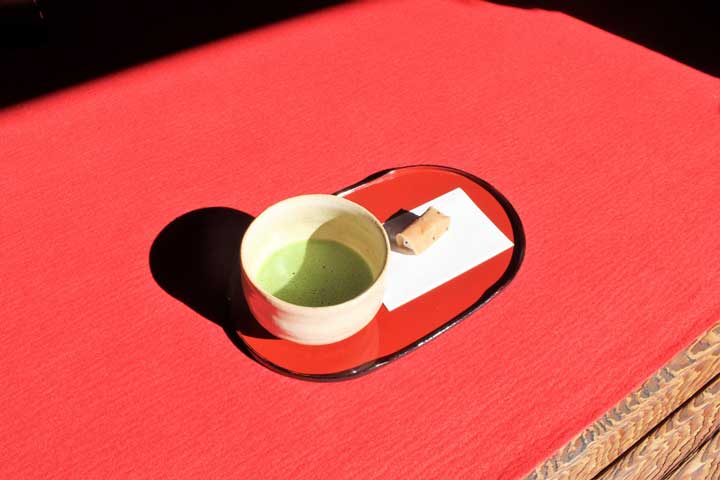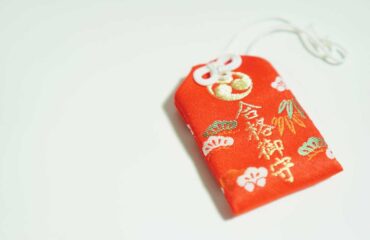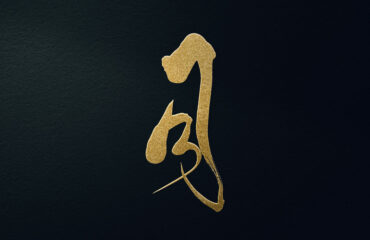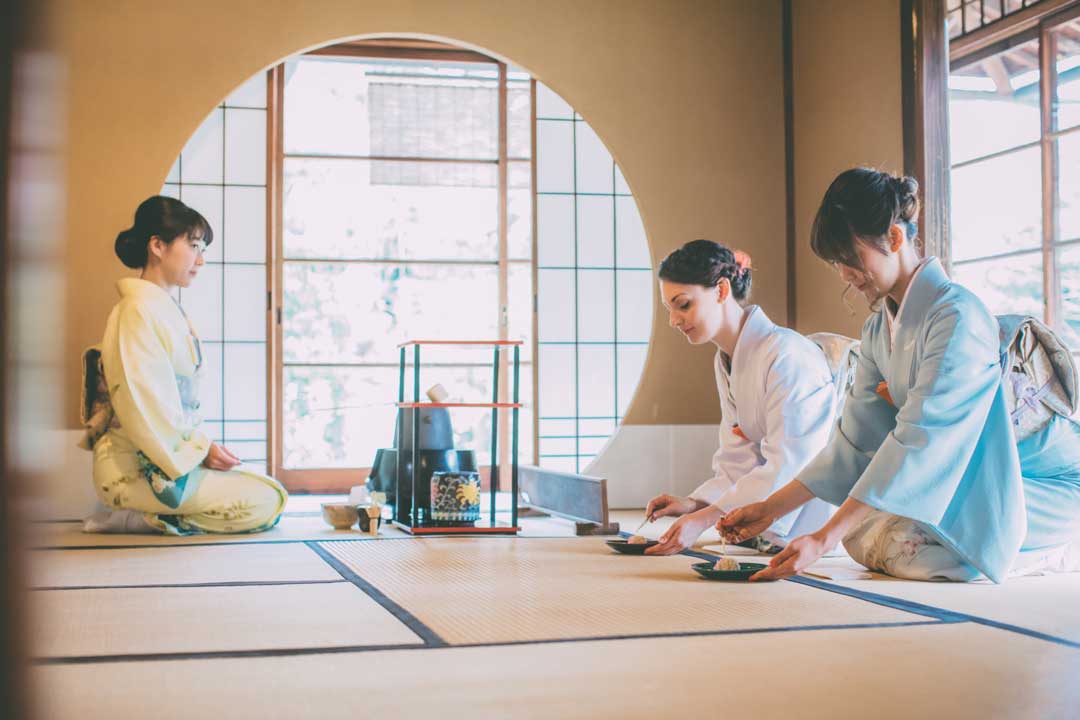
Sado, also known as the way of tea, is a unique aspect of Japanese culture that is admired worldwide for its deep spirituality and sense of beauty.
In this article, we will explore the meaning of the characters in Sado, its history, and the beautiful principles it encompasses, allowing us to appreciate the richness of Japanese culture.
What is the Japanese Tea Ceremony?
The tea ceremony, or Sado, refers to the rituals and styles associated with tea, encompassing the tea room, hanging scrolls, flowers, garden, tea utensils, and each individual etiquette.
It is a comprehensive art form that integrates all these elements, including the time during which the tea gathering takes place.
Through the tea ceremony, the host wholeheartedly entertains the guests.
The host, who organizes the tea gathering, meticulously prepares to ensure that the guests can fully enjoy their tea experience.
This includes carefully cleaning the tea room, tending to the garden, selecting seasonally appropriate tea sweets, and thoughtfully choosing which tea utensils to use, all with sincere consideration.
In turn, the guests also respond to the host’s attentiveness by showing the utmost respect and courtesy during the tea gathering.
The tea ceremony serves as a venue for the host and guests to connect with one another, emphasizing the importance of mutual respect and the spirit of harmony at its core.

The Meaning of the Characters in Sado (茶道)
The word Sado (茶道) is composed of two characters: “茶” (cha) meaning “tea” and “道” (do) meaning “way” or “path.” When combined, the term Sado embodies the idea of a spiritual path or discipline centered around the art of tea.
This concept highlights the importance of tea as a means to cultivate a deeper understanding of oneself and others, as well as an appreciation for the beauty and harmony found in everyday life.
The History of Japanese Tea Ceremony – Sado
Tea was first introduced to Japan during the Heian period, but it did not gain widespread popularity until the Kamakura period.
This was due to the efforts of Eisai, a Zen Buddhist monk who brought tea back to Japan.
As tea culture flourished during the Muromachi period, initially, Chinese-made items (karamono) and ostentatious objects were favored.
However, a Buddhist monk named Murata Juko popularized a more humble way of enjoying tea called “wabi-cha,” leading to an appreciation of Japanese-made items (wamono) and simplicity.
Juko emphasized the importance of spiritual exchange between the host and guests by using modest tea utensils and tea rooms.
This approach was further developed by Takeno Joo, who valued practice and creative innovation, integrating them into tea ceremony.
The artistic and aesthetic aspects of tea ceremony are said to have originated with Joo.
During the Azuchi-Momoyama period, Sen no Rikyu, who learned from Joo, brought wabi-cha to its peak.
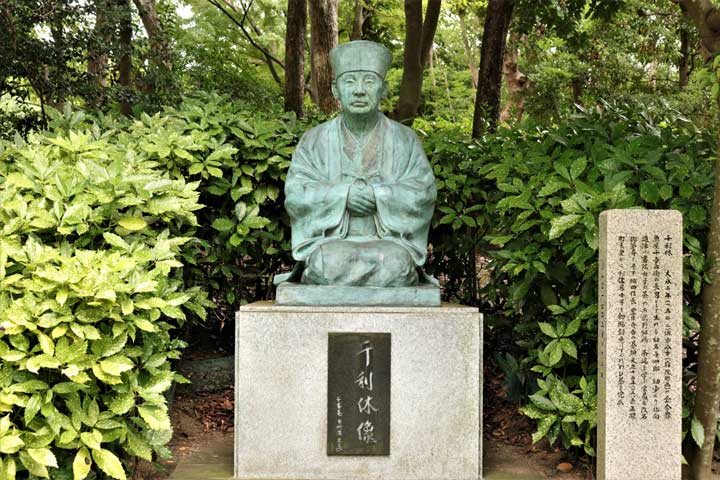
The Aesthetic Principles of Japanese Tea Ceremony – Sado
The principles of Sado are encapsulated by the phrase “wa-kei-sei-jaku (和敬清寂).” “Wa” represents harmony between people, “kei” refers to respect for others, “sei” signifies the purification of one’s body and mind, and “jaku” emphasizes the importance of a serene and peaceful environment.
Another key concept in Sado is “ichi-go ichi-e (一期一会),” which translates to “one time, one meeting.” This phrase expresses the belief that each encounter is unique and should be cherished, with both parties fully engaged in the moment.
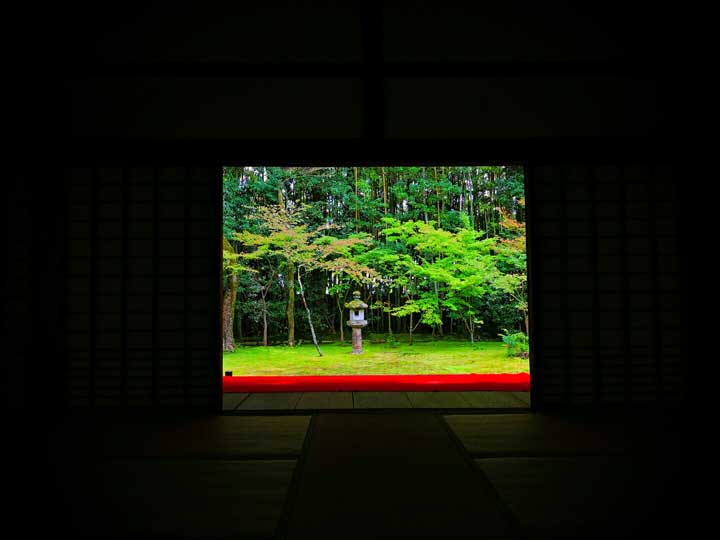
About Tea Rooms
A tea room is a dedicated space for conducting tea ceremonies, also known as chashitsu, sukiya, or kakoi.
After the completion of the tea ceremony by tea masters like Sen no Rikyu, tea rooms were established as special spaces.
Tea rooms are mainly classified into two styles: the soan-style tea room (grass hut) and the shoin-style tea room.
The layout of a tea room is typically centered around a four-and-a-half tatami mat space, featuring an alcove called tokonoma and a hearth.
In addition, there are different entrances for guests, such as the nijiriguchi (crawling entrance) or kimonoguchi (noble entrance), and a separate entrance for the host called the sadoguchi.
The tea room embodies the spirit and aesthetics of the tea ceremony, emphasizing the spiritual and harmonious interaction between the host and the guests.
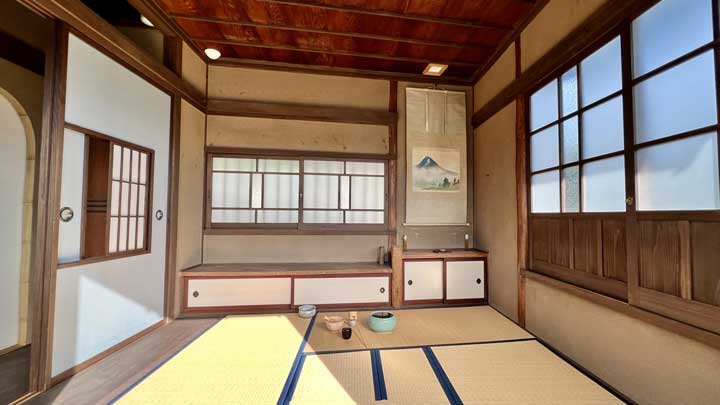
The Basic Flow of Japanese Tea Ceremony
When entering a tea room, one might wonder what takes place during the tea ceremony.
We’ll outline the general flow of the tea ceremony from the perspective of the guests.
-
Guests enter the tea room
-
Sweets are brought to the guests
-
The host brings the tea utensils into the tea room
-
The host cleans the utensils, prepares the tea, and serves it to the guests
-
The host tidies up the utensils, bringing the tea ceremony to an end
-
Guests exit the tea room
The purpose of performing the tea ceremony with care and attention is twofold: it allows the host to prepare a delicious tea with heartfelt dedication, and it helps the guests to compose their minds before partaking in the tea.
The Representative Schools of Japanese Tea Ceremony
The descendants of Sen no Rikyu established the “Urasenke,” “Omotesenke,” and “Mushakojisenke” tea schools, which are considered the three main schools of tea ceremony.
① Urasenke
Urasenke is a school known for actively incorporating contemporary trends while adhering to tradition. It is called “Urasenke” because its tea room is located along a back alley.
In Urasenke, the term “chado” is commonly used to refer to the tea ceremony.
② Omotesenke
Omotesenke is a school characterized by its faithful adherence to ancient customs and traditions.
The name “Omotesenke” comes from the tea room’s location facing the main street. In Omotesenke, the term “sado” is commonly used to refer to the tea ceremony.
③ Mushakojisenke
Mushakojisenke is a school known for its streamlined and rational movements.
The name originates from its location on a street called Mushakoji.
The tea room of Mushakojisenke has been destroyed and rebuilt several times, and with each iteration, unnecessary elements were removed, leading to a focus on practical movements.
The way of learning the tea ceremony differs depending on the school.
If you’re interested in experiencing the tea ceremony, please consider each school’s characteristics.
The main difference between Urasenke and Omotesenke lies in their practices.
For example, when preparing tea, Urasenke’s tea is characterized by its frothy and mellow taste, while Omotesenke’s tea, which is not frothy, allows for a deep matcha flavor.
Furthermore, each school has its own unique philosophy that they cherish.
Urasenke is characterized by its willingness to adopt new practices while valuing tradition. In contrast, Omotesenke values ancient traditions and is more conservative, inheriting the old ways of tea ceremony as the main family of Sen tea schools.
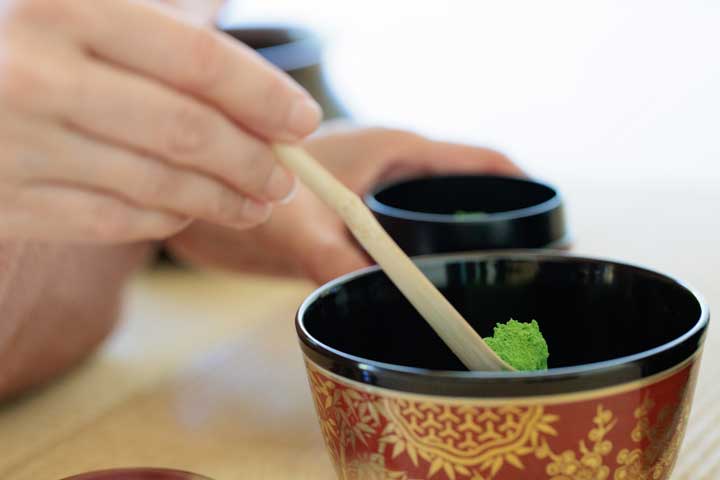
Learning Sado
Attending a Sado class is the most common way to learn the practice.
Many classes welcome beginners and offer trial lessons to get started.
Additionally, there are books and online courses available for those who prefer learning from home.
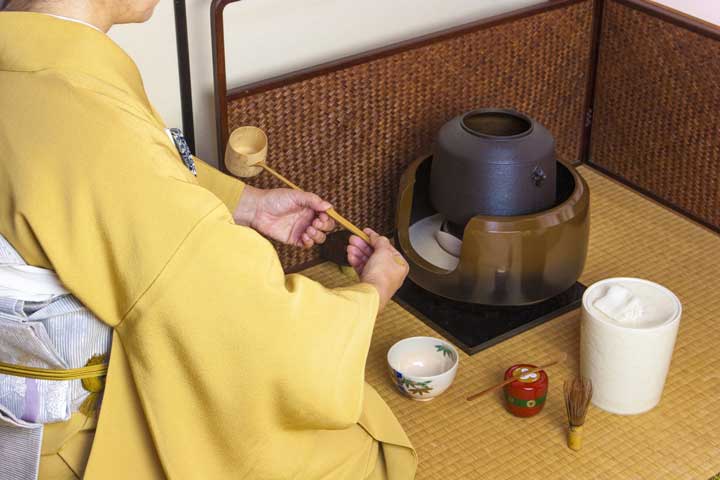
Sado Utensils
Various utensils are used in Sado, including tea bowls, tea whisks, tea scoops, tea caddies, tea cloths, thin tea bowls, and thick tea bowls.
Each utensil serves a specific purpose and plays a crucial role in the tea ceremony.
Many Sado utensils are also valuable collector’s items.
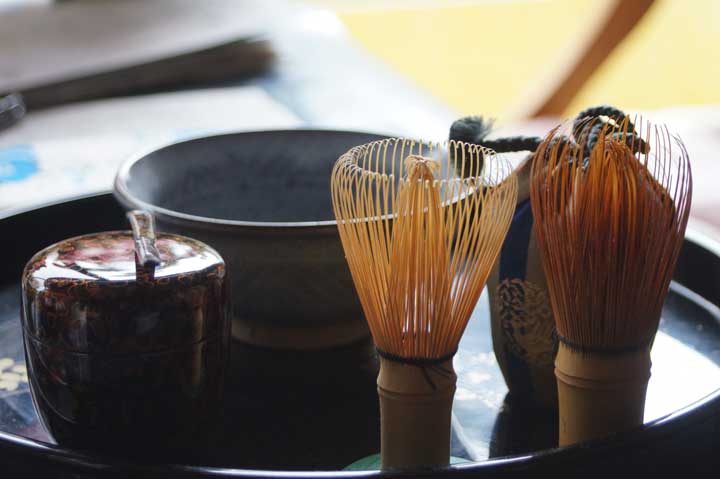
Enjoying Japanese Tea Ceremony – Sado
Sado is not merely about drinking tea but rather an experience that engages all five senses through elements such as the tea room, garden, flowers, incense, and utensils.
Moreover, Sado provides an opportunity for introspection and inner peace.
Participating in a tea gathering allows you to immerse yourself in the spirit of Sado.
Even for beginners, understanding the underlying principles can make the experience enjoyable.

Conclusion
Sado is a traditional art form that allows us to experience the essence of Japanese beauty and spirituality.
By learning Sado, you can develop a deeper understanding of yourself and others while appreciating the harmony and beauty found in everyday life.
This practice serves as a bridge between people and a reminder of the importance of cherishing each unique encounter.
As you embark on your journey into the world of Sado, you will discover a new perspective on Japanese culture and the world around you.
